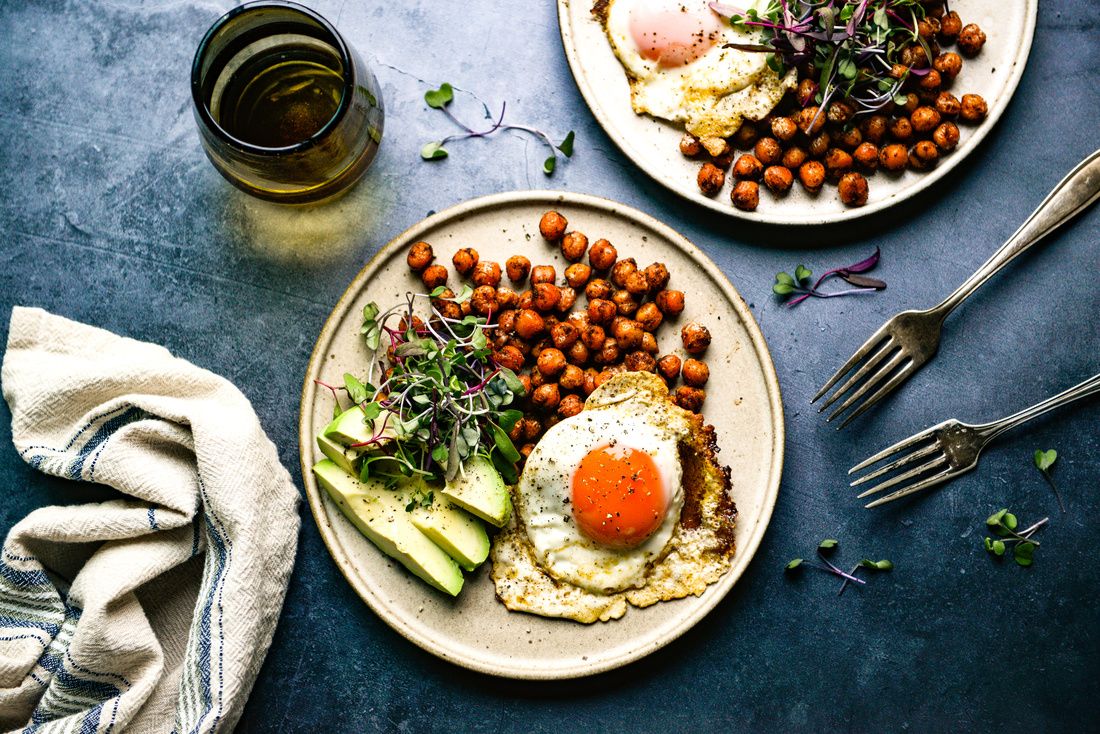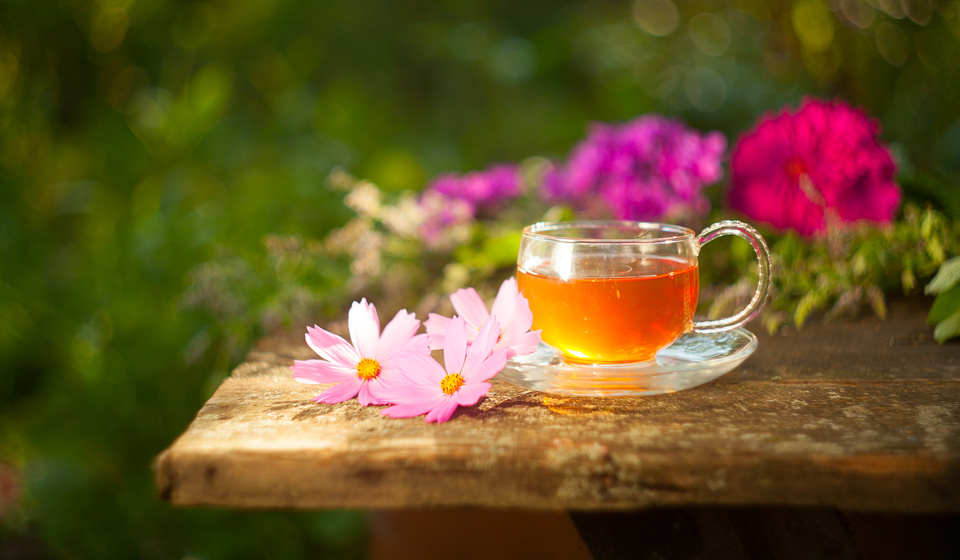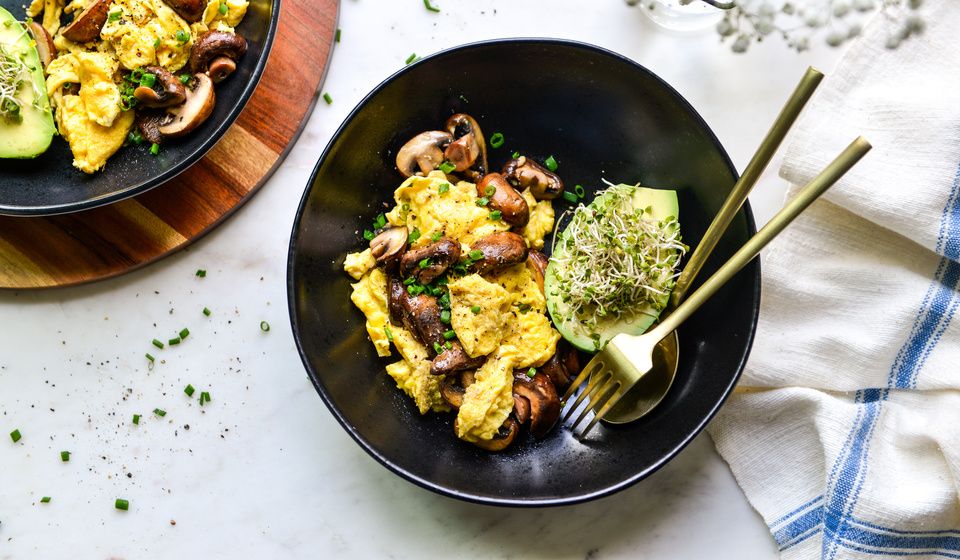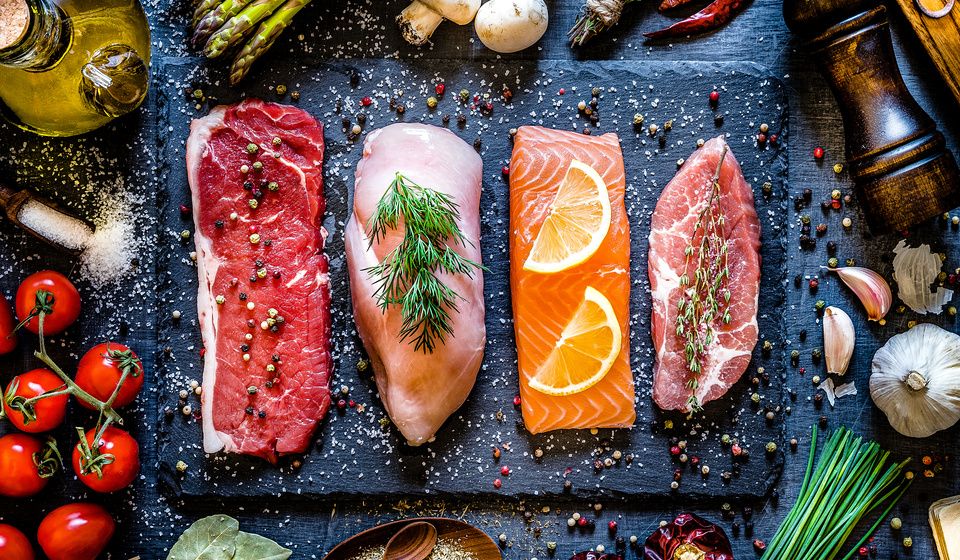Start Your Day with a High-Protein and High-Fiber Meal
Ali Segersten Jan 04, 2025
If you make one dietary change to set yourself onto a new trajectory of health, it should be to consume a nutrient-dense breakfast consisting of high-quality protein, fiber, and healthy fats. A nutrient-dense, high-protein, and fiber-rich breakfast will help you curb cravings for foods you are working to stay away from, boost your metabolism, balance your blood sugar, help regulate your circadian rhythms, keep your mind sharp during the day, and increase satiety.
It really doesn't need to be complicated. A quick, nutrient-dense breakfast could be several eggs and an avocado and a small bowl of legumes, cottage cheese with diced pears and chopped nuts, or overnight oats with a few hard boiled eggs on the side. A high-protein, fiber-rich breakfast hash using ground meat and vegetables is another quick and easy option. Our meal planner has numerous delicious hash recipes! If you are a member, simply use the category search and look for "Hash" to find all of our nutrient-dense breakfast hash recipes.
Setting achievable goals that you can build upon sets you up for the most success as it gives your body and brain time to rewire. Dietary change quite literally creates new biochemistry in your body that takes time to get used to. Creating this nutritional memory starts with removing processed foods from your diet. Too many changes at once can overwhelm the brain and nervous system, making the new diet or lifestyle modifications unrealistic to maintain. This is why I began The 12 Gifts of Health email series in December. Small, sustainable dietary shifts, orchestrated in a methodical way, can produce successful and lasting changes in health over time.
A nutrient-dense, high-protein, fiber-rich breakfast is a small, achievable goal that can produce profound changes in health over time! Protein and carbohydrates stimulate a gut peptide called GLP-1, however, fermentable fibers, like those found in legumes, feed beneficial bacteria in the colon that help to induce the release of even more GLP-1 from the gut. The good bacteria metabolize the fibers and secrete smaller molecules, which stimulates the release of additional GLP-1 from intestinal cells for hours after a meal. GLP-1 helps to stimulate insulin to be released and reduce food intake through appetite suppression. Basically, GLP-1 keeps blood sugar levels balanced, and tells your brain that you are full and that you don't need to keep eating. Therefore, it is important to do everything possible to keep your gut healthy if you would like to maintain a trajectory of health, ideal weight, and increased longevity. A whole foods diet rich in a wide variety of plant foods will help to shift the gut over time to contain a more diverse and stable microbial ecosystem.
Why is this so helpful? If you have been on and off diets, have a difficult time losing weight, have issues with blood sugar control, and would like to reduce cravings for processed foods or foods you know are not good for you, then increasing GLP-1 naturally through building a healthy gut, consuming higher amounts of protein and fiber at breakfast, and consuming a healthy diet in general will help you get there. Additionally, curcumin from turmeric has been shown to significantly increase GLP-1 secretion and polyphenols from plant foods help to keep GLP-1 in your system longer. Food is powerful medicine!

About the Author
Alissa Segersten, MS, CN
Alissa Segersten, MS, CN, is the founder of Nourishing Meals®, an online meal-planning membership with over 1,800 nourishing recipes and tools to support dietary change and better health. As a functional nutritionist, professional recipe developer, and author of The Whole Life Nutrition Cookbook, Nourishing Meals, and co-author of The Elimination Diet, she helps people overcome health challenges through food. A mother of five, Alissa understands the importance of creating nutrient-dense meals for the whole family. Rooted in science and deep nourishment, her work makes healthy eating accessible, empowering thousands to transform their well-being through food.Nourishing Meals Newsletter
Email updates.








Add Comment